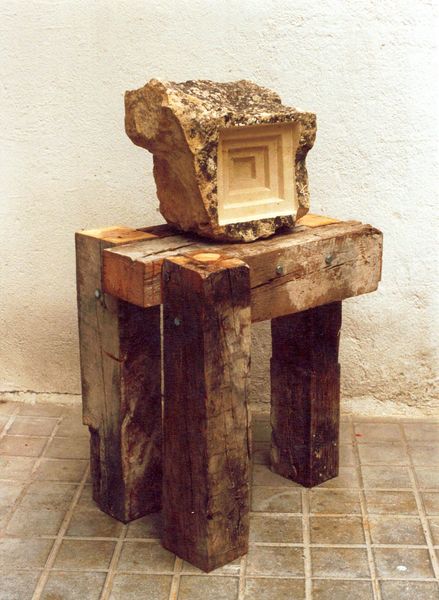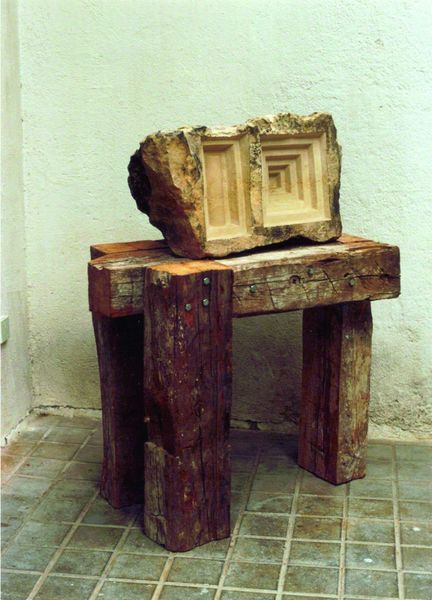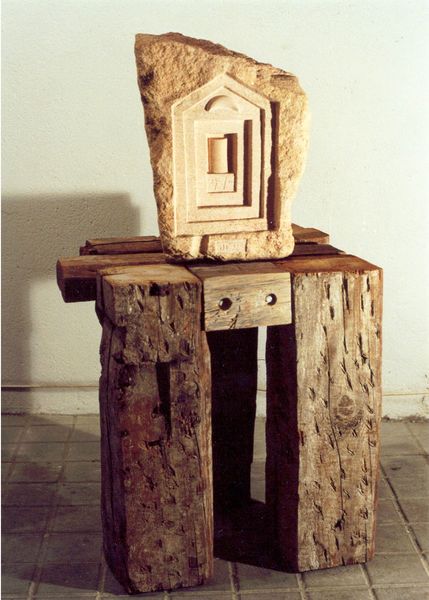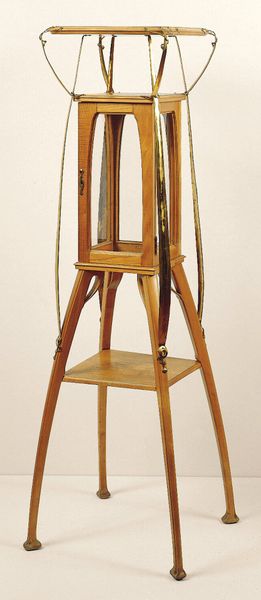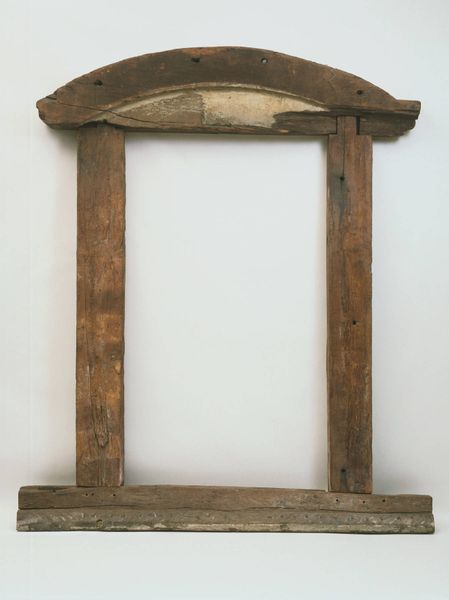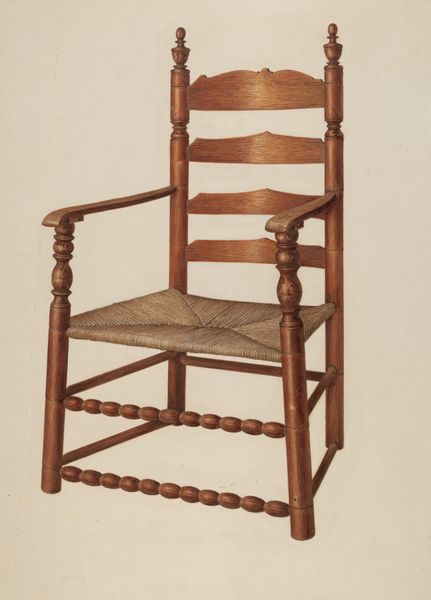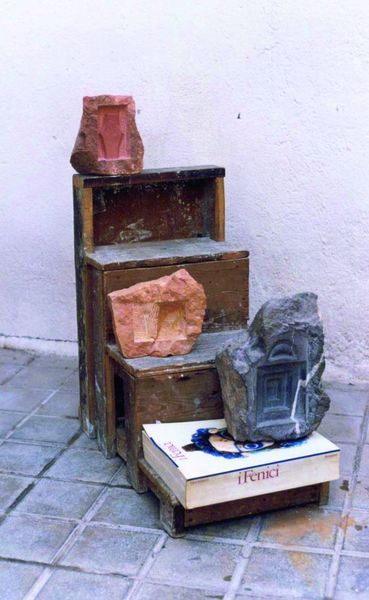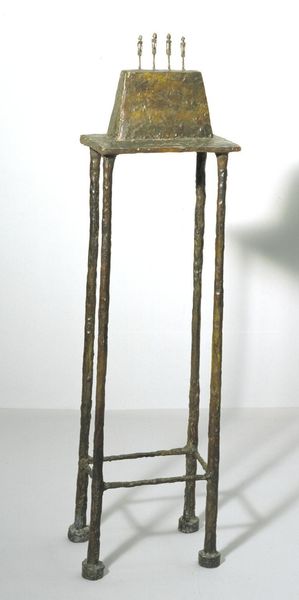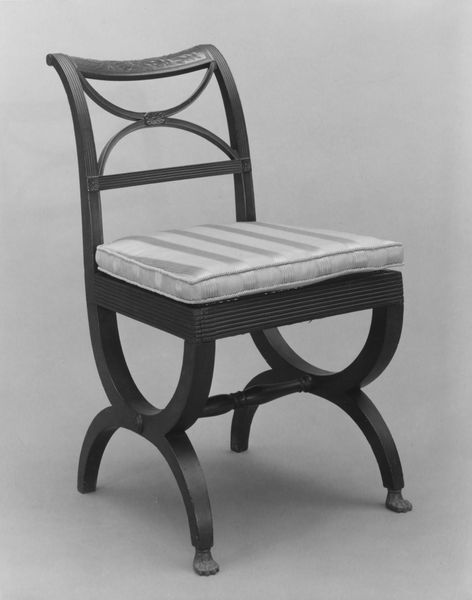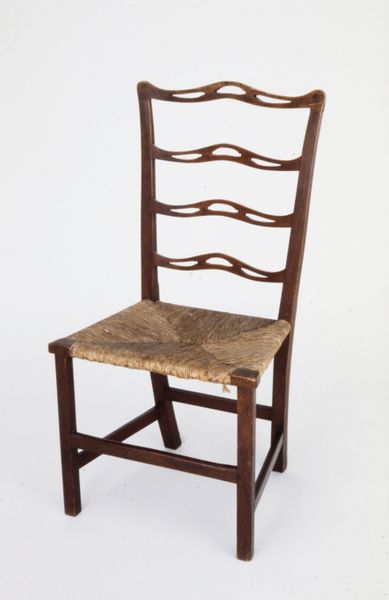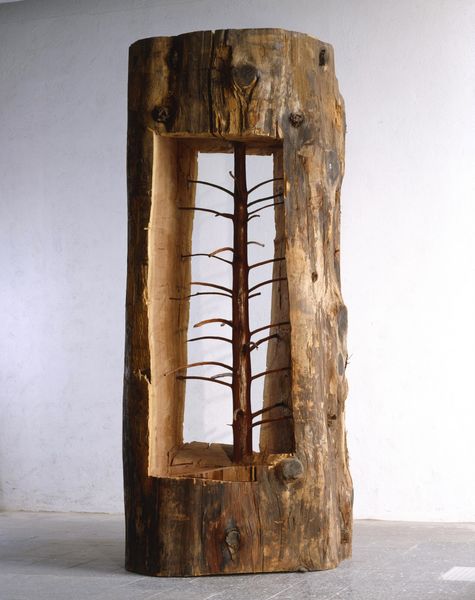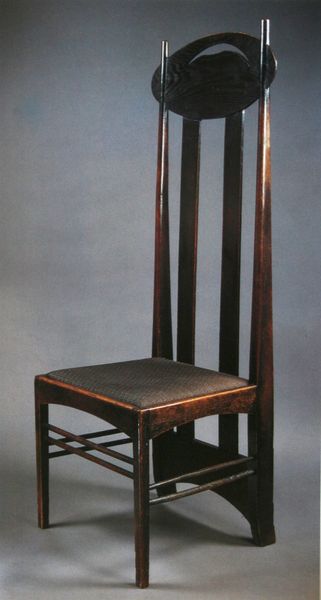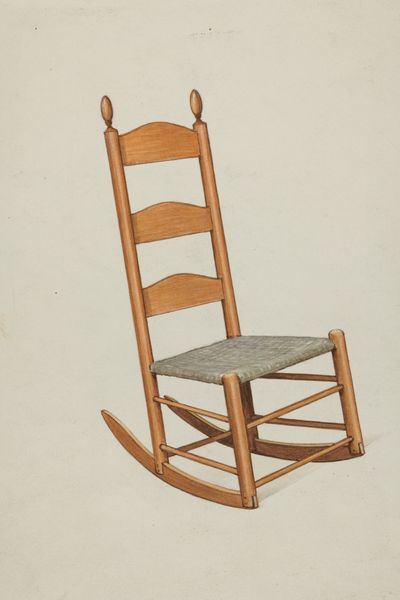
#
surveyor photography
#
table
#
pasteup
#
building site documentary shot
#
sculpture
#
furniture
#
sculptural image
#
possibly oil pastel
#
oil painting
#
derelict
#
spray can art
#
underpainting
Dimensions: 149 x 100 cm
Copyright: Douglas Abdell,Fair Use
Curator: The artist Douglas Abdell created “Raices De Occidente” in 1999. What immediately strikes you about it? Editor: It has a kind of poignant stillness to it, wouldn’t you agree? The roughly hewn stone monument placed so deliberately on what seems to be an aged painter's ladder and work table gives it this mood of almost…discarded importance? Curator: Exactly. Think of the processes involved here. The stone itself—likely locally sourced depending on where Abdell was working—points to an ancient craft. And it appears to be worked quite directly, maybe carved with hand tools if we consider the traces. Then look at the ladder—worn with what looks like layers of paint, which implies its own history of use, possibly connected to studio practice. It’s not pristine; it bears witness. The layering is important here. Editor: I agree. The presentation feels inherently linked to the everyday world of making art, almost defiant of the 'high art' pedestal tradition. I wonder how audiences would have received it back then – challenging notions of artistic value or craft perhaps? Where and how was this piece displayed? The social context of that first reveal would surely be revealing. Curator: The fact it includes incised writing could direct the work to become, or emulate, an object of communication or social control in the tradition of funerary stele. But, yes, this also raises fascinating questions about artistic labor and accessibility. The materials, while perhaps simple, tell complex stories of cultural legacy and even individual effort—Abdell's labor evident in both the carving of the stone and the selection and combination of these materials. Editor: Absolutely. And seeing it presented like this, without embellishment, asks viewers to consider art not as an isolated treasure, but something woven directly into a historical moment of material engagement and reevaluation of labor and cultural practice. It has aged incredibly well into that statement! Curator: It certainly provides many pathways for inquiry. Considering how this piece operates in institutional spaces and contributes to broader narratives, the impact the cultural context plays on understanding and appreciating these interwoven components of labor and culture is undeniable. Editor: A fascinating reminder of the history embedded in both the art object itself and how we view it.
Comments
No comments
Be the first to comment and join the conversation on the ultimate creative platform.
